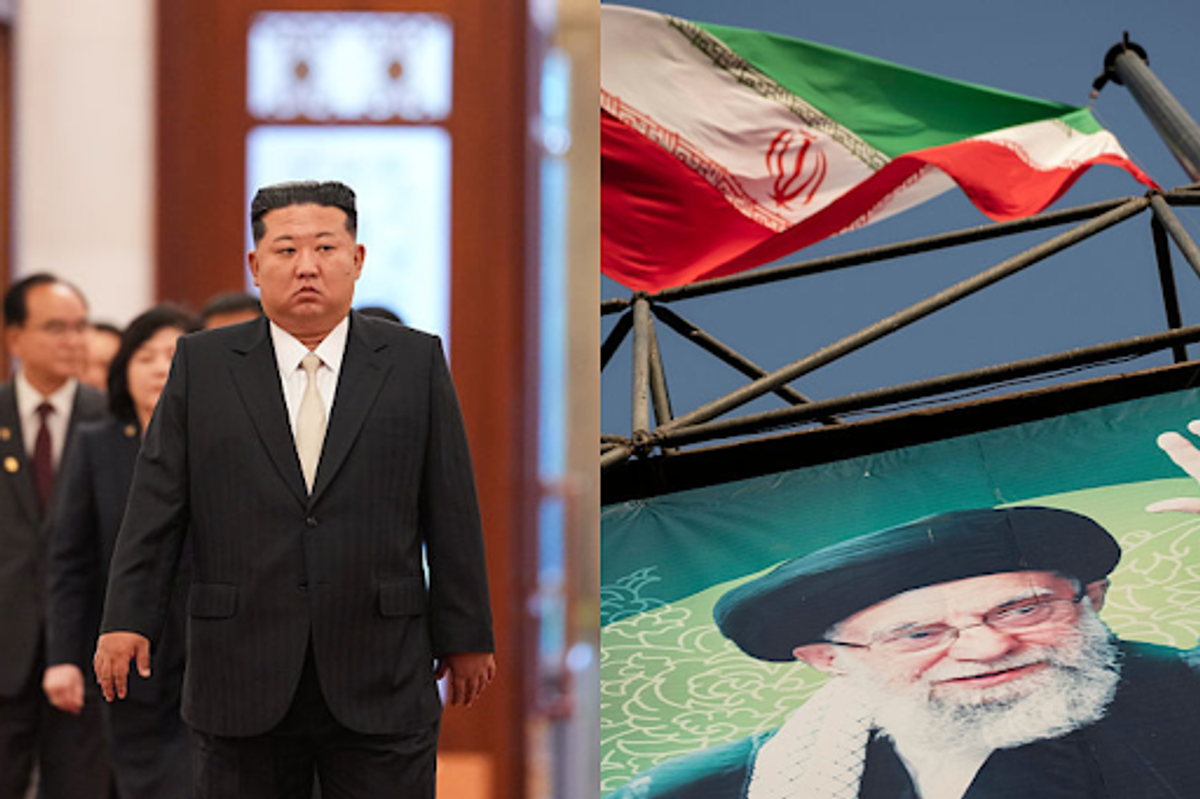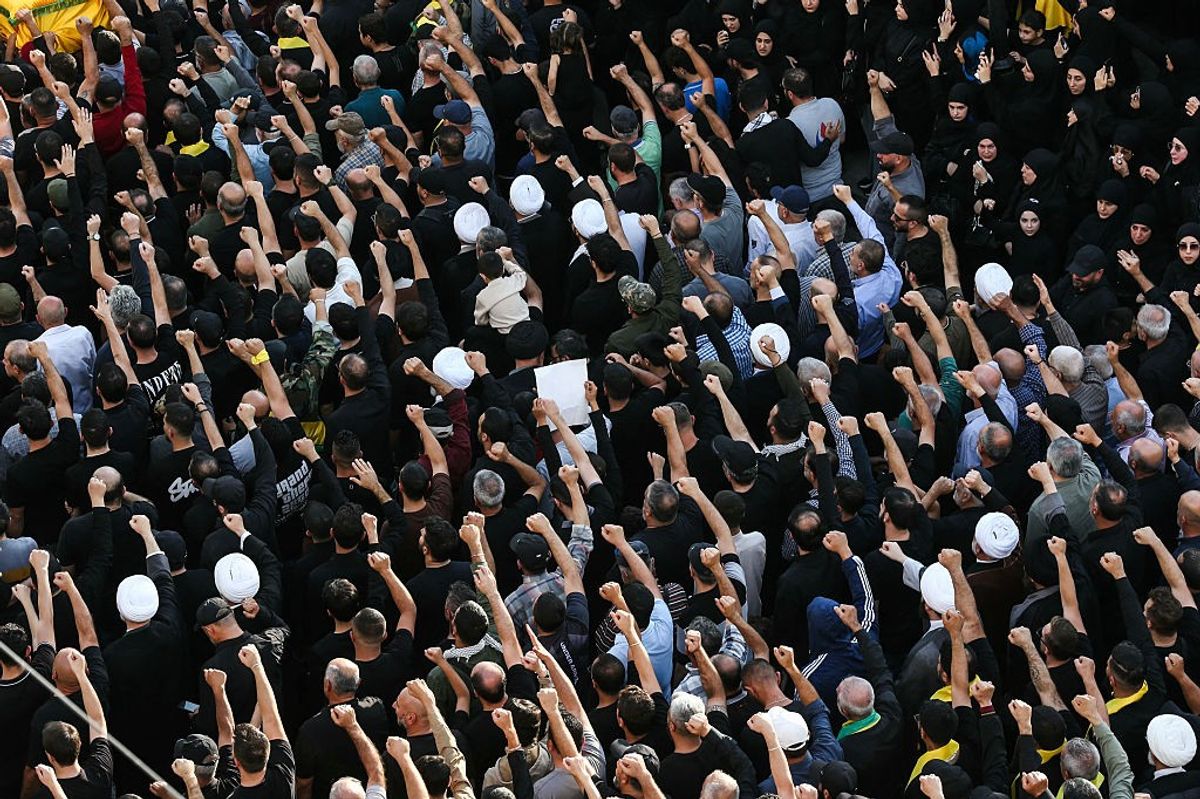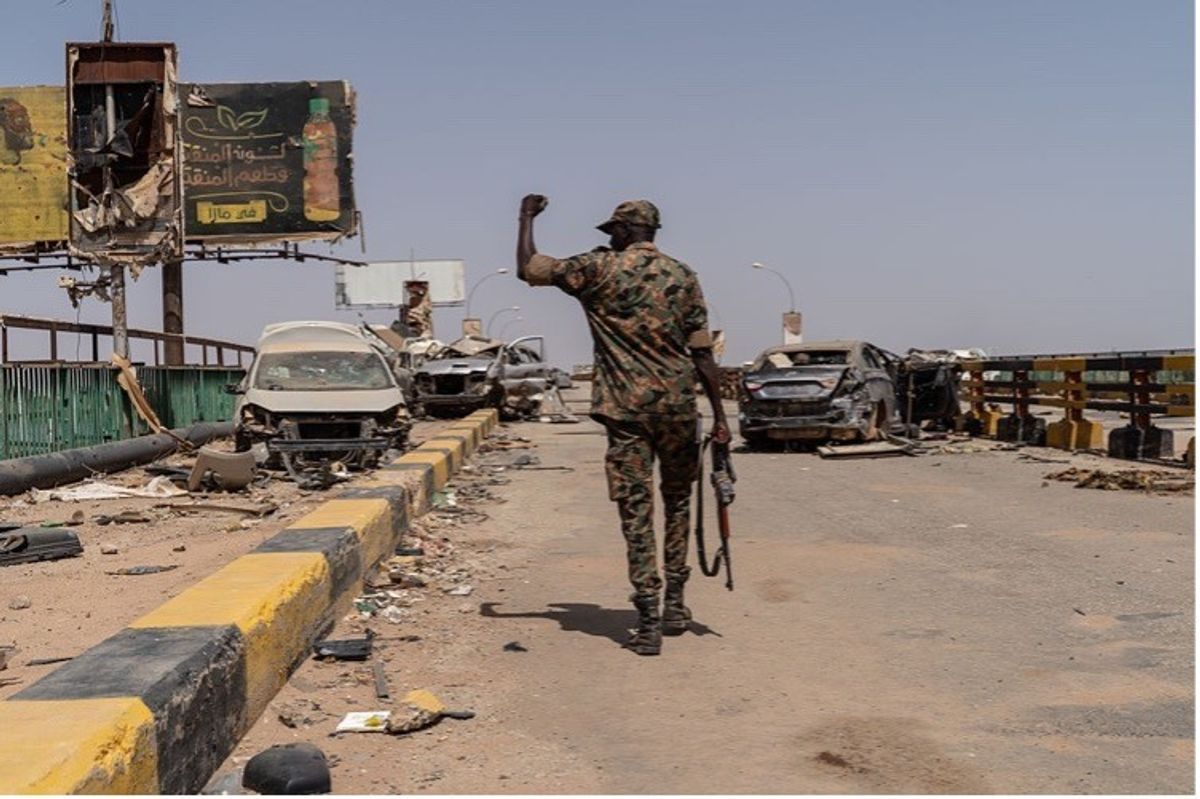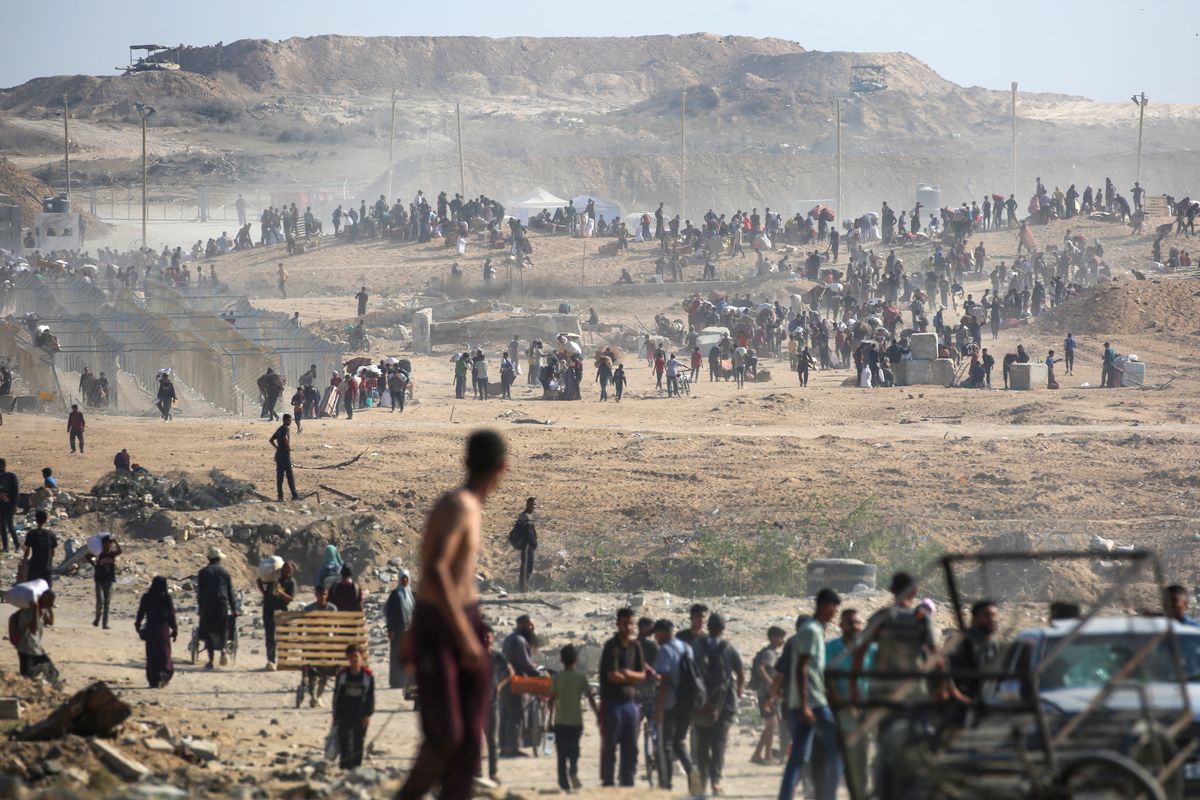DEEP DIVE — It may be the most consequential change to the Middle East since the October 7, 2023 Hamas attacks against Israel, and the wars that followed: Iran’s so-called “Ring of Fire” against Israel has been badly broken.
That “Ring” is the term for Iran’s strategy to encircle Israel with heavily-armed organizations. Time and again, Iran has used the militant organizations – Hamas in Gaza, Hezbollah in Lebanon and the Houthis in Yemen, along with several smaller groups that operate in Iraq and in Syria – as proxies to terrorize Israel. Iran has provided funding, weaponry and training to these groups, which in turn have essentially done the dirty work for Tehran.
One year after Israel sent troops into Gaza against Hamas, and just over a month since it began a full-scale campaign against Hezbollah in Lebanon, those two groups have seen their military power greatly degraded, enough to call into question the viability of the Iranian “Ring of Fire.” The new reality was especially evident in the fact that after two rounds of unprecedented Israeli airstrikes against Iran, neither the regime in Tehran nor any of the proxy groups dealt a powerful retaliatory blow to Israel.
“Iran’s proxy armies are failing,” Paula Doyle, a former Associate Deputy Director of Operations at CIA, told The Cipher Brief. “If Iran felt protection by having Hezbollah do the dirty work, by having Hamas do the dirty work, by having the Houthis do the dirty work, they are not finding effective fighting forces anymore. They’re going to continue to be lethal, but they’re not going to be able to project power in the way they have in the past.”
No one is suggesting that Hamas, Hezbollah or the other groups have been destroyed. But the changes have already damaged Iran’s ability to project power and influence across the greater Middle East.
“With its proxies battered, its air defenses shredded and its missile arsenal devalued, Iran is more strategically naked than at any time in decades,” Hal Brands, a senior fellow at the American Enterprise Institute, wrote last week in Bloomberg Opinion.
It’s a paradigm shift that few saw coming. And now experts are wrestling with the implications – which range from potential new dangers to new opportunities to remake the landscape of the Middle East.
Assessing the damage to the proxies
Before the October 7 attacks, Hamas was estimated to have around 30,000 fighters. One year later, Israel says it has killed 17,000 Hamas fighters; the independent monitoring group Armed Conflict Location and Event Data (ACLED) puts the figure at 8,500. On the one-year anniversary of the war, Israel said it had found 4,700 tunnel shafts under the Gaza Strip and destroyed 1,000 rocket launcher sites in the territory.
Israel has also killed several top Hamas leaders, including Yahya Sinwar, Ismail Haniyeh (in a strike carried out in Tehran), and the military wing leader Muhammed Deif. Israel also claims to have killed eight Gaza militant brigade commanders, around 30 battalion commanders and 165 company commanders.
“Hamas is no longer an effective fighting force,” Gary Grappo, a former U.S. Ambassador to Oman, told The Cipher Brief. “It’s still a threat, but much less of a threat.”
The damage done to Hezbollah has been considerable as well – and it has happened much faster. In early 2024, the CIA World Factbook estimated that Hezbollah had 50,000 armed combatants, though not all were full-time soldiers. CSIS reported in March that the group had an arsenal of 120,000-200,000 rockets and missiles.
Israel’s military says it has destroyed more than half of Hezbollah’s precision-guided missiles and killed hundreds of Hezbollah fighters in Lebanon. The latter number is in dispute – as Hezbollah and Lebanese government authorities have said many were Lebanese civilians. But there is no question that Israel has decimated the Hezbollah leadership.
On September 27, Hezbollah’s longtime leader Hassan Nasarallah was killed in an Israeli airstrike, along with the commander of Hezbollah’s Southern Front and other military leaders. In early October, another Israeli airstrike on Beirut killed Hashem Safieddine, Nasrallah’s cousin and likely successor.
“Israel surgically removed the entire leadership of Hezbollah. The strategic level leadership is gone,” Ralph Goff, a six-time CIA Station Chief with extensive experience in the Middle East, said at last month’s Cipher Brief Threat Conference. “They’ve even killed the guys on the tactical level. They've created a huge mess for Hezbollah to figure out what to do next.”
It’s a “mess” for Tehran as well. Iran can no longer count on either of these two major proxy militia groups to do its bidding against Israel.
The Houthis have fared better. Their relative success may be explained by the fact that they have only rarely struck Israel, training their drones and missiles instead at shipping vessels in the Red Sea. The Houthis have targeted more than 80 merchant ships with missiles and drones during the last year, seizing one and sinking two.
And while the U.S. and U.K. have launched hundreds of airstrikes against Houthi targets since January, there has been no major campaign to destroy the group – certainly nothing like what Israel has unleashed against Hamas and Hezbollah.
“The Iran-backed Houthis have not just survived, they are thriving,” Vice Admiral Kevin Donegan, former Commander of the U.S. Fifth Fleet, told The Cipher Brief. “This is not an arbitrary assessment; it is borne out by a host of metrics that show the Houthis are stronger and wield more influence now than they did before they began launching their attacks on Red Sea shipping lanes last October.”
Hamas and Hezbollah still exist, of course. New leaders will emerge, and several experts note that Israel’s wars have inspired new recruits for Iran’s proxies. Emile Nakhleh, a founding director of the CIA's Political Islam Strategic Analysis Program, wrote in The Cipher Brief last week that because of Prime Minister Benjamin Netanyahu’s “refusal or unwillingness to address the root causes that helped create Islamic political parties and movements in Palestine, Lebanon, and elsewhere, Israeli successes in war could prove no more than a Pyrrhic victory.”
But for the regime in Iran, the bottom line is that its proxy armies – the core of the “Ring of Fire” strategy – have been battered.
“[Iran] had surrogates and capability in Lebanon – now half of it's gone, if not more. And Hamas is essentially gone,” Bernard Hudson, former Chief of Counterterrorism at the CIA, told The Cipher Brief. “The Houthis are still standing, but it may be just because they haven't gotten around to getting to them yet.”
“There’s a whole new question in the region, one year later,” Doyle said. “Are Hezbollah and the other groups now nervous that Iran does not have their back? And that they therefore cannot re-equip, cannot rebuild, cannot retrain fast enough to keep up with the pace of Israel’s actions? Who’s the supply chain? Their supply chain has always been Iran. This is a major change.”
A nightmare – or an opportunity?
In the wake of these dramatic changes, experts say two utterly different scenarios are possible.
One is a full-scale regional conflagration. In this scenario, the regime in Iran determines that it cannot continue to absorb the damage done to its proxy armies, not to mention Israel's strikes against Iranian territory, without a significant military response. Not retaliating, in this view, would be political suicide for a regime that has vowed repeatedly that it will not stand for Israeli strikes on its territory. Most recently, Iran’s Supreme Leader Ayatollah Ali Khamenei vowed “a crushing response” to Israel’s Oct. 28 attack on military targets in Iran. Thus far, no such response has come – but that doesn’t mean it’s off the table.
“The risk of escalation is real,” Brands said. “Iran is weak but not impotent. It won’t sit passively as Washington crushes its economy and Israel bludgeons its allies. Iran could respond by lobbing more missiles at Israel, targeting U.S. allies or military bases in the Persian Gulf, or perhaps even making a break for the nuclear bomb. Any of these moves could trigger the big, ugly war Trump aims to avoid.”
The problem for Iran, and the reason why many say this is an unlikely scenario, is that the events of the last few months have laid bare Iran’s relative weakness. If it were to climb the “escalation ladder” with Israel, as General Frank McKenzie, a former CENTCOM commander, put it in an interview with The Cipher Brief, it would invite an even more powerful attack from Israel, and quite possibly involvement from the United States military as well. In short, that “escalation ladder” doesn’t lead to good places for the regime in Tehran.
“We always have said Iran typically owns the lower steps on the escalation ladder; Israel and the United States own all the higher steps,” General McKenzie said. “And that’s where we are right now. The momentum and the initiative is all on Israel’s side.”
A completely different scenario suggests an opening for regional diplomacy – and a greatly changed Middle East landscape.
In this view, a coalition of nations opposed to Iran – Israel, the United States, Saudi Arabia, and the United Arab Emirates in particular – would join forces in a kind of anti-Iran strategic alliance. Many believe this was where the region was headed prior to the October 7, 2023 attacks, when prospects for a landmark Israeli-Saudi peace were gaining momentum. That possibility was set back by Israel’s heavy assault on Gaza, and its enormous toll on Palestinian civilians. Saudi Arabia has said it will not consider warmer relations with Israel until it ceases its war in Gaza.
“Expect Trump to pick up Biden’s push for a regional grand bargain,” Brands said. “Diplomatic normalization between Israel and Saudi Arabia, coupled with enhanced U.S. defense and technological ties to the Saudis — that would consolidate the anti-Iran coalition.”
Writing in The New York Times last month, Thomas Friedman suggested a carrot-and-stick approach to capitalize on Iran’s growing weakness.
“If we want a peaceful and better Middle East, we need to sharpen the choices for Iran’s clerical leadership,” Friedman wrote. He suggested a package of concessions (the resumption of nuclear talks, and a possible lifting of sanctions) and threats (giving Israel “every weapon in our conventional arsenal” to strike the nuclear program sites) as a way to bring Iran to the negotiating table, and lasting change to the region.
“We need to confront Iran with an overwhelming, credible threat of force, coupled with a diplomatic survival pathway out, but one that this time addresses both Iran’s nuclear threat and regional behavior.”
It all may seem like a long shot, a distant dream for the region, especially as the wars rage in Gaza and Lebanon. But one year ago, no one imagined that Iran’s “Ring of Fire” would be on the ropes.
Ethan Masucol contributed reporting.
Read more expert-driven national security insights, perspective and analysis in The Cipher Brief.














